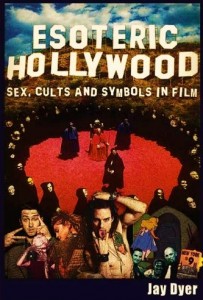 Jay Dyer
Jay Dyer
21st Century Wire
I remember when I was 14, there was only one VHS rental in the small town where I lived, and as a result, I think I rented every enjoyably bad post-apocalypse and sci-fi title. When by age 15 we had moved to a larger city with even more strip mall VHS rental options, I had seen them all. The good news is, I didn’t see them all – there’s Cherry 2000 (1987). Somehow this gem of the genre was stored away for me by the B movie angels for a later date. The other neat-O aspect of Cherry 2000 is its prescience in terms of the social order – it’s set in 2017.
As with most post-apocalyptic films, the devastation of what would be the early 21st century is generally off – most Americans aren’t dwelling in the slum remains of former cities, in underground catacombs or desert-born RV communities. We don’t barter for Kool Cigarettes or scan rival tribes for nuclear fallout, rather, oil is plentiful and, as of yet, there are still Kool Cigarettes available at your local gas station. Mad Max hasn’t happened yet, nor has Hell Come to Frogtown (we’re still fecund!), though we recently had a southern U.S. gas shortage that was a hint of what could be, should a manufactured crisis (and it would be manufactured) ever occur.
As for the film, several curious themes and symbols appear for JaysAnalysis purposes, so let us analyze. The U.S. has fragmented into various “zones,” some wastelands, some metropolitan. For the metropolitan and urban areas, the conditioning of the populace has been highly successful, resulting in mandatory mass recycling centers. This aspect of the film is amazingly prescient, not because recycling was absent in the 80s, but rather the “green,” Agenda 21 style enforcement of the policies have become overtly tyrannical. This aspect of the predictive prognostication is nearly accurate, as the globalists have capitalized on the ecological and environmentalist movements to promote both the nanny state and depopulation (through a manufactured “green” “revolution”).
Besides the hyper-focus on supposed environmental issues, the dystopic future cosmopolis is also hyper-sexualized, turning this outlet towards sexbots. Achieving a normative status, sexbots are commonplace as designer mates are chosen for those who can afford it, while in the underground actual sexual contact is a black market commodity (through a kind of state-sanctioned prostitution requiring contracts). Sam’s bros talk him into visiting the real sex club titled “Glu Glu Club,” which i speculate symbolizes the now-absent “glue” of society – love, in both its eros and agape senses, the “glue” of society embodied in the bond of man and woman is now almost absent. The club’s sign is also situated within the eyeball/target imagery, a prominent recurring image in the film, especially when seen in concert with the overt Egyptian themes in the climax. Sexbots, in fact, are now here.
Filled with ziggurats, pyramids and giant towers to technological prowess, the “civilized” metropolis is shown to be a palace of vapid pleasures, and in an interesting twist of irony will constitute the real wasteland. Executive Sam Treadwell’s seemingly idyllic life is thrown into chaos as his iWife Cherry 2000 short circuits following a romp on a suds-filled kitchen floor. The contrast of man’s technological simplicity and ease with his lack of emotional fulfillment is an appropriate paradox for our world of technihilism, and will only continue as sexbots become more and more commonplace.
Discovering his specific model of Cherry is quite rare, Sam embarks on a journey into “Zone 7” where they are housed, a wasteland befitting any post-apocalyptic B movie, populated by roving gangs of sadistic wild-men, a bizarre cult and hermetic loners. Sam, convinced that Cherry is the ideal, archetypal woman hires “E” – Edith Johnson (Melanie Griffith) to be his “tracker,” or guide through the wastelands. Immediately apparent is the film’s constant and clever use of irony, with Edith being the true “cherry” (with her vibrant red hair) Sam is seeking, yet Sam’s psychological process through the hero’s quest is still incomplete.
Oddly, and keeping with the eyeball/target/hole theme, as Sam enters the outskirts of the wasteland to hire Edith, he stays at the “Gloryhole Hotel” (if you aren’t aware of what that is, don’t worry about it, but it recalls the consistent theme of the target-eye-hole imagery throughout, suggesting an association extending back to both Crowley and ancient Egypt. In my view, the usage of this triad symbol suggests: First, the control of the masses in the megalopolis through the top of the pyramidal structure, the eye, or the corporate/banking elite as it appears on the US dollar. “Oh, how superior is the Eye of Horus (anus) to the Mouth of Isis (vagina)!” – Aleister Crowley, whose sodomite practices are part and parcel of the barrenness of sterility that results from the prevalence of sodomy, just as the hyper-sexualized society in the film rarely engage in vaginal intercourse. As a side note, the film does not show actual sex and nudity.
On a deeper level, the eye is symbolic of many things, including divine providence, the higher faculties in man (the mind’s eye), Lucifer, and, of course, the anus. The symbol is thus polyvalent and determined based on its context. For Sam, his continual encounter with target-hole-eye symbolism suggests his control by his desires, seeking fulfillment in the ideal “hole” of the perfect feminine. Thus, I posit at the heart of Cherry 2000 is an alchemico-psychical journey of Sam, the future man, and his quest to overcome simulacrum, the synthetica of his artificial environment of technological ease and virtual phantasm fulfillment. Like inhabitants of Plato’s cave, the corporate city-dwelling man of the future is surrounded by the artifices of man’s ingenuity, not for the freedom he believes he possesses, but for his enslavement.
Crossing the wasteland, Sam and E encounter the common motif of the hero’s quest, the descent underground, shown in classic examples of Odysseus in The Odyssey, Aeneas in The Aeneid and Dante in The Inferno, or even the katabasisof Christ’s descent into Hades. The wasteland zone also includes the “graveyard,” indicating a process of intense travail and testing, or something akin to a dark night of the soul or a “crossing of the abyss.” Here he encounters the film’s protagonist, Lester, who runs a kitschy, googie architecture style cult called Sky Ranch. Lester runs his cult like a tyrannical patriarch, commanding his concubines (?) and wife to “make sandwiches” and obey his pettiest whims, while the most humiliating fact is that Lester’s chief broad is Sam’s ex-girlfriend (who apparently left Sam for Lester years prior). Thus, the usage of the 50s atomic, googie aesthetics is associated with the 50s-era nuclear “family unit” and the supposed tyranny of the Leave it to Beaver father-figure.
Here we can sense traces of feminism, which in an otherwise enjoyable B movie gives a bit of nausea. The message seems to be all older forms of social order are no longer applicable or useful, where Lester’s patriarchal cult is set in contrast to the egalitarian sex-obsession of the mega-city. Indeed, Cherry is a strong, independent woman who feels she doesn’t need a man, until (as can be expected), she and Sam gradually fall in love. Perhaps in this sense the feminist aspects of the film can be redeemed and canceled out: Both Sam and E discover they need each other. In this case, it’s the old Egyptian magic of manipulating sexual energy.
Sam’s obsession with Cherry’s hand-held “memory disc” is almost a perfect parallel to today’s iPhone-obsessed populace, with Sam risking life and limb to recover Cherry’s RAM and voice recordings. The irony once again is that Sam is willing to sacrifice everything for something that isn’t real, when what he is seeking is right before him (of course, paradoxically he never would have met Edith without his Cherry quest, so perhaps modern man’s futile quest to achieve satiety through phantasms will lead him to the truth of their lie – very Baudrillardian).
Persons are also often contrasted with the theme of toasters, or bodies, as if the bots are mere toasters, while the humans are persons who possess souls. This is crucial in the film’s philosophy and for our purposes, since modern man has had the belief in the soul intentionally stamped out of him, as Bertrand Russell said would occur. Russell said belief in free will and the soul would have to be crushed through an eternal boot on the face of all resistance, to create the world envisioned by the technocrats, where depopulation and a mindless drone population could be corralled into monotonous Brave New World-style delta and epsilon work.
Finally reaching the ruins of Vegas (the location of Zone 7), and specifically an old Pharaoh’s Casino, Sam finds a working model Cherry 2000 housed like a hidden mystical treasure. The Vegas imagery is important, as well as the Egyptian symbolism, as Vegas is a modern simulacrum of ancient empires. If you’ve visited, you see my point – an adult Disneyland of all vices, a sensory overload empire in the desert that even erects synthetic pyramids, temples and Roman palaces and coliseums.
Vegas is a simulation for the control man through his passions, and in Cherry 2000 the symbolism of the eye-target-hole comes full circle, as the idolatrous imperial elites of old beguiled man with the same trickery of today (those atop the social pyramid), only now it is infinitely more sophisticated and scientifically precise. Until man (and especially modern man) learns the Satanic symbol of the simulation is the stamping out of his own soul, he will forever be locked in the maze of his own shadows of the cave wall.
The capturing of man’s eye of the mind is the control of his imagination, his hopes and dreams according to Gregory Bateson, and in our day the false Gospel of man’s “liberation” is the creation of an artificial intelligence, a cyborg-slash-android bot to fulfill his desires. The arrival of A.I. and the sex bot, however, does not exemplify man’s freedom and technological prowess, but the end of man, and the designers and architects of those bots are the social engineers and technocrats who surround the eye – the same eye of egypt, the eye of Lucifer who persistently cons man through his imaginal realm, his mind’s eye, his dreams, where man seeks his meaning and destiny. Socrates should have played Cherry 2000 on the wall for his cave-dwelling compatriots.
























